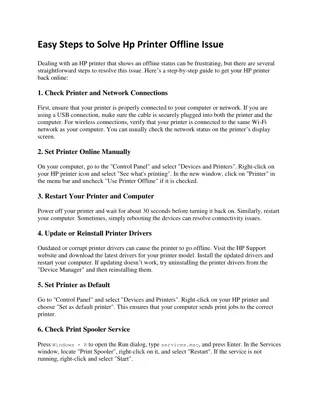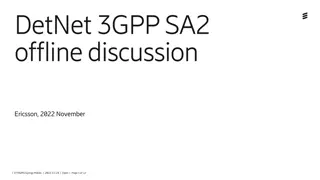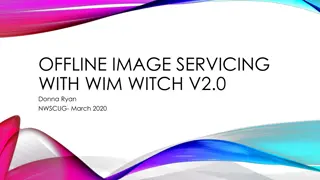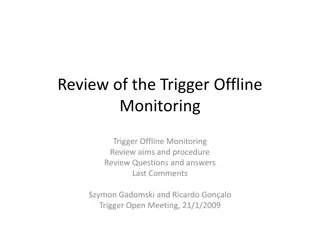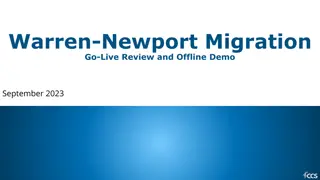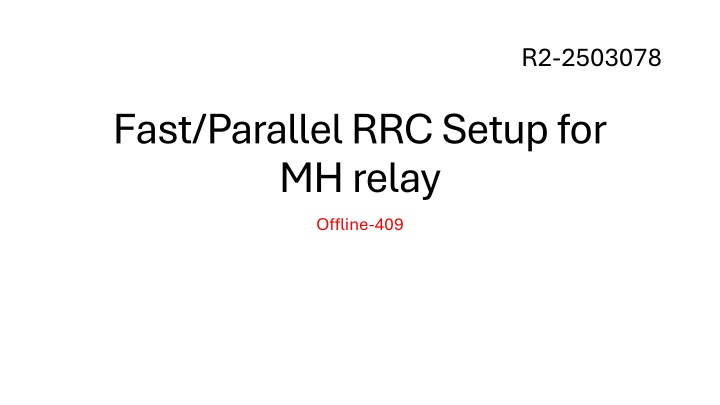
Efficient RRC Setup for Relay Communication: Offline-409 Discussion
Explore the efficient fast/parallel RRC setup for MH relay in Offline-409. Understand latency reduction motivation, solution operation, and differentiation of remote UE options. Delve into RRC message forwarding, scope discussions, and more for improved relay communication procedures.
Download Presentation

Please find below an Image/Link to download the presentation.
The content on the website is provided AS IS for your information and personal use only. It may not be sold, licensed, or shared on other websites without obtaining consent from the author. If you encounter any issues during the download, it is possible that the publisher has removed the file from their server.
You are allowed to download the files provided on this website for personal or commercial use, subject to the condition that they are used lawfully. All files are the property of their respective owners.
The content on the website is provided AS IS for your information and personal use only. It may not be sold, licensed, or shared on other websites without obtaining consent from the author.
E N D
Presentation Transcript
R2-2503078 Fast/Parallel RRC Setup for MH relay Offline-409
Offline-409 [AT129bis][409][Relay] Fast/parallel RRC forwarding for approach 1 (Apple) Scope: Discuss the forwarding procedure proposed in R2-2502189: - Understand the expected spec impact and details of the proposal - See if there is consensus to include this proposal in approach 1 Intended outcome: Report to Tuesday evening relay session in R2-2503078 Schedule: Tuesday 2025-04-08 0830-0930 CST in Brk2 Deadline: Report available by Tuesday 2025-04-08 1600 CST
Motivation for Latency reduction In baseline approach, the requirement for UEs entering RRC_CONNECTED sequentially causes significant delay, which is not scalable as the number of hops increases. Latency reduction can be achieved by enabling parallel RRC connection setups of Remote UE and Intermediate Relay UE(s). This is for Approach 1, assuming all relay UEs will still enter CONNECTED. (Brief)Discussion on Motivation:
How the Solution works in high-level RRCSetupReq RRCSetupReq RRCSetupReq RRCSetupReq 2nd relay Last relay 1st relay Remote gNB RRCSetup RRCSetup RRCSetup RRCSetup Uu Uu Relay RLC channel Relay RLC channel SL SL- -RLC0 RLC0 SL SL- -RLC0 RLC0 SL SL- -RLC0 RLC0 SRB0 message (e.g., RRCSetupReq/RRCSetup) forwarded by intermediate relay UEs not in RRC_CONNECTED [TS 38.351 spec impact] Remote UE still use legacy mechanism to reach first intermediate relay Relay UE remembers which PC5 link received the first SRB0 message in UL and use it for DL egress link determination Discuss: Operation on Uu Relay RLC channel (last hop) kept unchanged? Discuss: FFS a new SL-RLC is introduced (e.g., SL-RLC-X) or reuse SL-RLC0
Discussion: How to Differentiate Remote UE Option 1 (R2-2502189): SRAP header adding a L2 ID field to indicate remote UE in a new header format [mainly TS 38.351 spec impact] Option 2 (R2-2502778): gNB allocated Local ID(s) to intermediate relay UE in RRCRelease when UE enter INACTIVE; relay UE then assign this local ID to represent remote UE when create SRAP header [manly TS 38.331 spec impact]
Further discussion on scope Which RRC messages (of remote UE) can be fast forwarded? Option 1: Only SRB0 Option 2: both SRB0 and SRB1 Which RRC state of intermediate relay UE to support? Option 1: IDLE/INACTIVE/OOC Option 2: INACTIVE
Way-forward Consider parallel RRC setup scheme or not? With the design constraints and scope limits as follow? -xxxx





